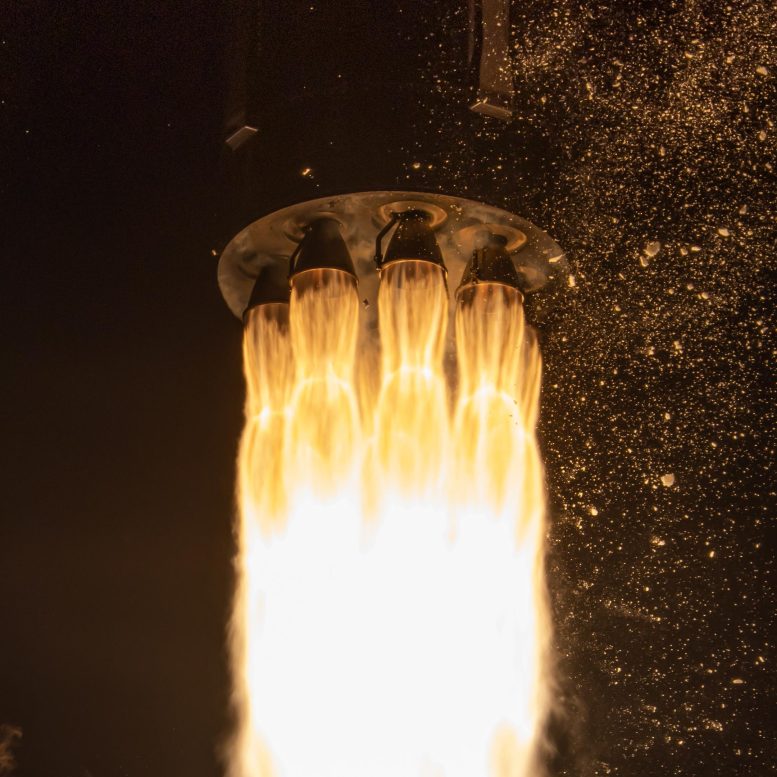
The Cislunar Autonomous Positioning System Technology Operations and Navigation Experiment, or CAPSTONE, mission launched at 5:55 a.m. EDT Tuesday, June 28, 2022, on Rocket Lab’s Electron rocket from the Rocket Lab Launch Complex 1 on the Mahia Peninsula of New Zealand. Credit: Courtesy of Rocket Lab
A cubesat the size of microwave oven launched to space on June 28 from New Zealand by commercial company Rocket Lab and their Electron rocket. The small satellite will conduct tests to ensure the unusual lunar orbit proposed for NASA’s future Lunar Gateway is actually stable.
CAPSTONE, the Cislunar Autonomous Positioning System Technology Operations and Navigation Experiment, launched aboard an Electron rocket at 5:55 a.m. EDT (2:55 a.m. PDT / 09:55 UTC) on Tuesday, June 28, 2022, from the Rocket Lab Launch Complex 1 on the Mahia Peninsula of New Zealand. The Electron, a two-stage, a partially recoverable orbital launch vehicle, has now flown 27 times with 24 successes and 3 failures.
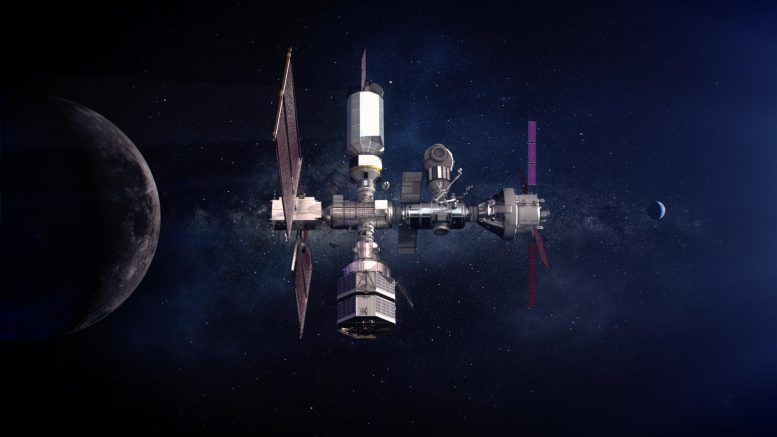
Illustration of Gateway in lunar orbit. Built with commercial and international partners, the Gateway is critical to sustainable lunar exploration and will serve as a model for future missions to Mars. Credit: NASA
The Gateway is a lunar space station that will support NASA’s Artemis program to return to the Moon and enable future missions to Mars. The unique orbit, called a near rectilinear halo orbit (NRHO), is an elongated polar orbit that brings a spacecraft within 1,600 km (1,000 miles) of one lunar pole on its near pass and 70,000 km (43,500 miles) from the other pole every seven days. Because the orbit uses a balance point in the gravities of the Earth and the Moon, it is theorized that spacecraft flying from this type of orbit will require less propulsion capability for traveling to and from the Moon’s surface than other circular orbits and requires minimal energy to maintain.
CAPSTONE’s main mission is to attempt to establish that this location in space provides a stable and ideal location for a space station, as well as a staging area for missions to the Moon and beyond.
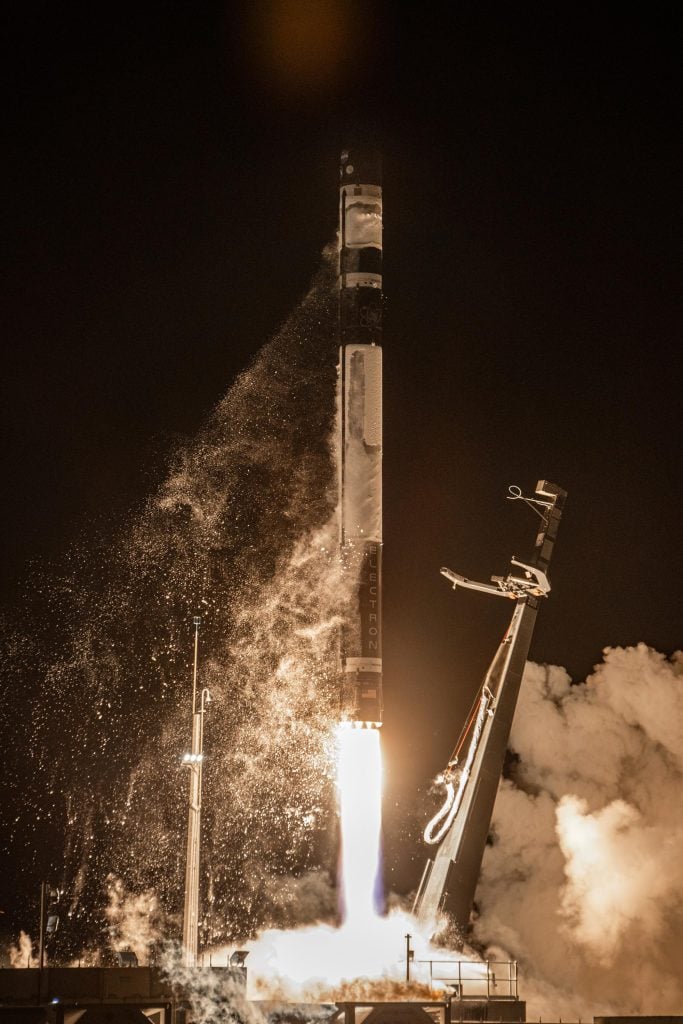
CAPSTONE, the Cislunar Autonomous Positioning System Technology Operations and Navigation Experiment, launching aboard Rocket Lab’s Electron rocket from the Rocket Lab Launch Complex 1 on the Mahia Peninsula of New Zealand Tuesday, June 28, 2022. Credit: Rocket Lab
The spacecraft is currently in low Earth orbit, and is attached to Rocket Lab’s Lunar Photon, an interplanetary third stage that will send CAPSTONE on its way to deep space. It will take about four months for it to reach the targeted lunar orbit.
Shortly after launch, Lunar Photon separated from Electron’s second stage. Over the next six days, Photon’s engine will ignite at specific times to accelerate it beyond low-Earth orbit, where Photon will release the CubeSat on a ballistic lunar transfer trajectory to the Moon. CAPSTONE will then use its own propulsion and the Sun’s gravity to navigate the rest of the way to the Moon. NASA says the gravity-driven track will dramatically reduce the amount of fuel the CubeSat needs to get to the Moon.
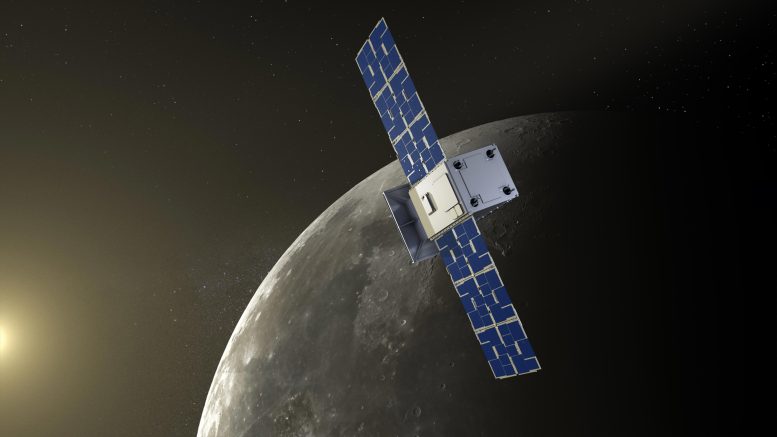
CAPSTONE in orbit near the Moon: After release from Rocket Lab’s Photon satellite bus, CAPSTONE will use its propulsion system to travel for approximately three months before entering into orbit around the Moon. Credit: Illustration by NASA/Daniel Rutter
CAPSTONE’s job is to validate the power and propulsion requirements for maintaining its orbit as predicted by NASA’s models. During its many orbits, the CAPSTONE will demonstrate the reliability of an innovative spacecraft-to-spacecraft navigation system, using the reliable and long-lived Lunar Reconnaissance Orbiter – which has been in orbit of the Moon since 2009 – as a touchstone and point of reference, without the use of ground stations. CAPSTONE will determine the distance between the two lunar orbiting spacecraft, and NASA says this technology could allow future spacecraft to determine their position in space without relying exclusively on tracking from Earth.
“CAPSTONE is an example of how working with commercial partners is key for NASA’s ambitious plans to explore the Moon and beyond,” said Jim Reuter, associate administrator for the Space Technology Mission Directorate, in a NASA press release. “We’re thrilled with a successful start to the mission and looking forward to what CAPSTONE will do once it arrives at the Moon.”
Congrats to the #CAPSTONE team for a successful launch this morning! The spacecraft will explore a unique lunar elliptical orbit, the same orbit planned for @NASA_Gateway – a multipurpose outpost for long-term lunar missions as part of the @NASAArtemis program. pic.twitter.com/FRFcfy38WQ
— Thomas Zurbuchen (@Dr_ThomasZ) June 28, 2022
You can follow the spacecraft’s journey live using NASA’s Eyes on the Solar System interactive real-time 3D data visualization. Starting approximately July 5, 2022 NASA will also provide a virtual ‘ride along’ with the CubeSat in a visualization on NASA’s Ames Research Center’s home page as well as providing updates on Twitter and Facebook.
“CAPSTONE is a pathfinder in many ways, and it will demonstrate several technology capabilities during its mission timeframe while navigating a never-before-flown orbit around the Moon,” said Elwood Agasid, project manager for CAPSTONE at NASA’s Ames Research Center in California’s Silicon Valley. “CAPSTONE is laying a foundation for Artemis, Gateway, and commercial support for future lunar operations.”
Adapted from an article originally published on Universe Today.


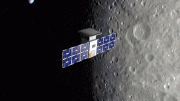
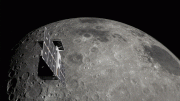

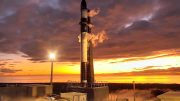

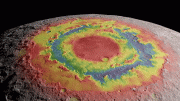
Be the first to comment on "Rocket Lab Launches NASA’s CAPSTONE Mission to the Moon"